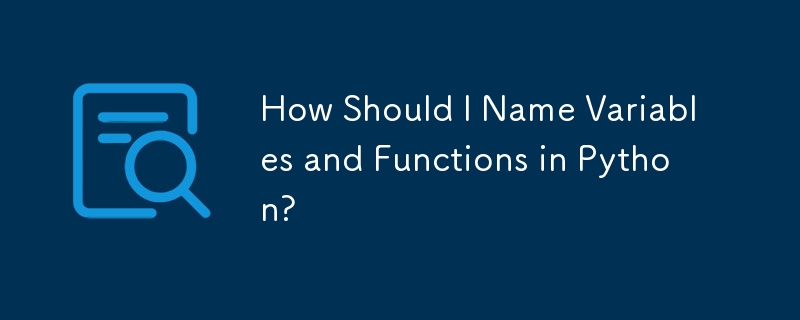

Python Variable and Function Naming Conventions
Unlike C# where camelCase or PascalCase are prevalent in variable and method naming, Python offers a plethora of possibilities. Variables and functions can be named using camelCase, PascalCase, or snake_case. While it may seem haphazard, Python's naming conventions are guided by the Python Enhancement Proposal (PEP) 8.
PEP 8: Function and Variable Names
According to PEP 8, the following guidelines should be followed:
Function Names:
Variable Names:
Exceptions:
Example:
Adhering to these principles, the following coding style becomes preferable:
this_is_a_variable = 'a'
def this_is_a_function():
passWhile you may still encounter other naming styles in Python code, adhering to PEP 8 ensures consistency and readability, promoting collaboration and code maintainability.
The above is the detailed content of How Should I Name Variables and Functions in Python?. For more information, please follow other related articles on the PHP Chinese website!




